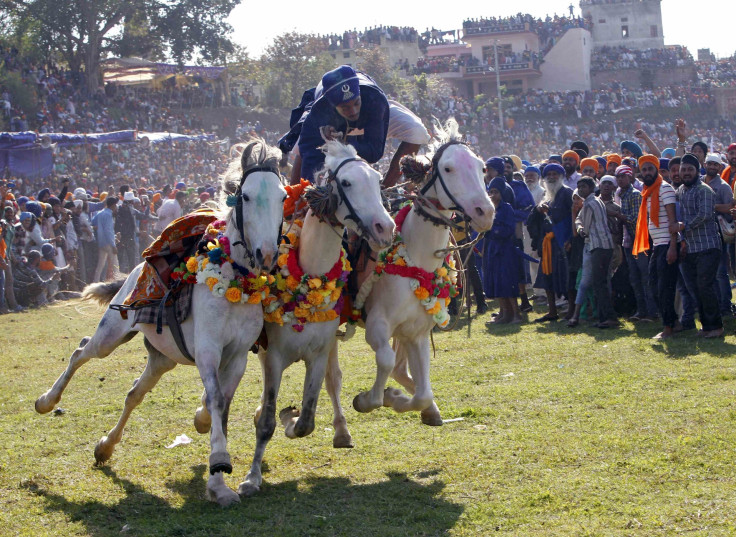Hola Mohalla 2015: Facts, History, Rituals Surrounding The Sikh Festival [PHOTOS]

On Friday, Sikhs around the world will start celebrating Hola Mohalla, a festival that begins on the first day of the lunar month Chet. This year the weeklong festival begins March 6 and coincides with the Hindu spring festival Holi.
Hola Mohalla dates back to the 18th century, when guru Gobind Singh, the last of the 10 Sikh gurus, created an occasion for Sikhs to show off their martial arts skills and host mock battles. Today, Sikh communities commemorate the holiday by hosting martial arts parades, taking part in devotional worship, singing and community outreach efforts.
This year, thousands of devotees have descended on the town of Anandpur, where the festival was first celebrated. The town hosts the second-most important Sikh shrine where guru Gobind Singh baptized five men into the faith and founded the Khalsa Panth, a term used to refer to Sikhs who have reached the highest state of spiritual purity.
Hola Mohalla usually takes place after the Hindu festival Holi. This year, the festivals begin on the same day. While both are celebrations, they are distinct from each other in terms of history and religious significance. Holi is a spring festival that commemorates the Hindu deity Krishna and the legend of Holika and Prahalad. For Sikhs, Hola Mohalla is more of a day for community gathering than it is a religious holiday.
“The Sikh tradition does not believe in holiday in the western sense,” Simran Jeet Singh, a senior religion fellow for the Sikh Coalition and a Ph.D. candidate in the religion department at Columbia University, said. “There is no time or day that is more holy than any other.”
Below are photos of Sikh celebrations around the world:
RT @HTPunjab: Hola Mohalla at Golden Temple in #Amritsar. Photo credit: Sameer Sehgal/HT pic.twitter.com/FaJtkZb5TT
— Suresh Kumar (@SureshB127) March 6, 2015And some traditional #Punjab wrestling to round off Hola Mohalla visit to Anandpur Sahib. @UKinIndia pic.twitter.com/JnB5stLLiu
— David Lelliott (@DavidLelliottUK) March 5, 2015HOLA MOHALLA is an occasion for the Sikhs to re-affirm their commitment to Khalsa Panth. #HolaMohalla #AnandpurSahib pic.twitter.com/zYaE2I5Yta
— Harjinder S Kukreja (@SinghLions) March 6, 2015© Copyright IBTimes 2025. All rights reserved.






















